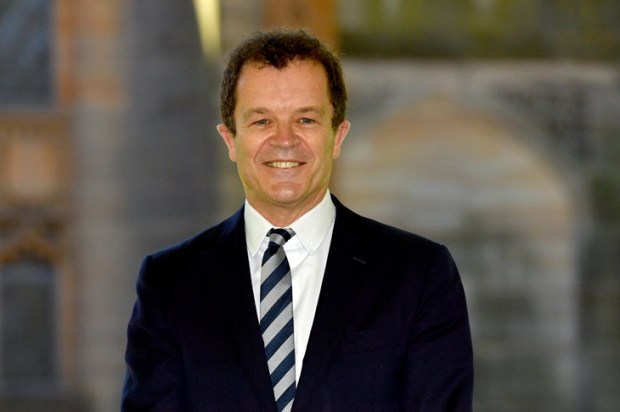In the 1960s and 70s, the American ethologist and behavioural researcher John B. Calhoun conducted an experiment with mice to better understand the effects of population density on behaviour. The experiment, conducted at the National Institute of Mental Health, was known as Universe 25. It consisted of a predator-free, 9-foot square pen with nesting boxes and unlimited food, water, and nesting materials but limited space.
The results were surprising. Rather than physical density, the more limiting idea of ‘social density’ suggested a bleak future for humans living in urban environments. While Calhoun was controversial for ‘anthropomorphising’ his findings, it shocked me how Universe 25 mirrors what is happening in our increasingly Woke Western world.
Calhoun discovered that although there was space for up to 4,000 mice, the population peaked at around 2,200. Social interactions limited the population rather than space.
The experiment began in 1968 with four breeding pairs of mice that grew rapidly and doubled every 55 days. Calhoun identified distinct periods of activity as the population grew.
Initially, the mice explored and established territories as population growth accelerated. However, towards the end of the first year, social breakdown began, and aggression, infanticide, and withdrawal were observed.
Calhoun coined the term ‘behavioural sink’ to describe how the mice voluntarily crowded in high-density areas like around food hoppers, leading to pathological behaviours such as violence and neglect.
As social breakdown progressed, Calhoun noted two distinct groups of mice known as the ‘beautiful ones’ and the ‘probers’.
The beautiful ones were characterised by their physical health, pristine fur, and lack of engagement in social activities like mating, fighting, or territorial behaviour. They focused almost exclusively on eating, drinking, sleeping, and grooming, often isolating themselves in less crowded areas of the enclosure. Calhoun described them as trapped in an ‘infantile state’, unable to engage in complex social behaviours.
This group was not ‘beautiful’ in an aesthetic sense, but the term described their scar-less and well-groomed physical appearance. They represented a symptom of societal breakdown, where normal behaviours like mating and parenting had collapsed.
The probers, on the other hand, were hyperactive, hypersexual, and sometimes cannibalistic, engaging in erratic behaviours including mounting other males. This was described as ‘pansexual’ rather than strictly homosexual, suggesting it was less about sexual orientation and more about disordered behaviour under extreme stress.
After nearly three years, the birth rate plummeted, infant mortality reached near 100 per cent, and the population collapsed. By the end of the third year, no new conceptions occurred, and by 1973 the colony was extinct.
Human studies conducted in 1975 found no consistent link between crowding and similar behaviours in people. It was argued that the emergence of the beautiful ones and the probers were symptoms of an extreme environment, not universal truths about overpopulation.
Nonetheless, society in 1975 might as well have been in a galaxy far, far away as far as Wokeism is concerned. Nobody was trying to deliberately wreck the economy and the environment or introduce additional genders or re-write history in perverse ways.
I watched the 2024 movie about the Swiss folk hero William Tell on the flight home recently. The story has been re-written to include Tell’s Arab wife (brought back from the Crusades) and their mixed-race son. Movies these days are deliberately looking at innovative ways to twist history to suit the Woke narrative. I am starting to wonder if this is a sign of our impending social collapse.
In an interesting twist to the controversy over the applicability of the Universe 25 experiment to human society, things have changed from 1975. Perhaps it was too soon to notice 50 years ago.
Humans are increasingly being forced to live in ever-higher density. The idea of 15-minute cities is much like the voluntary crowding that brought about behavioural sink. The forced isolation of our youth during the draconian pandemic lockdowns put our kids into an unnatural state, much like that of Universe 25.
Similarly, our birth rate is decreasing, people are choosing not to have as many children (or any children). Our youth are not prepared to serve in our police and defence forces, and we even have people who identify as pansexual, asexual, and even as cats.
Fortunately, as humans we can debate and discuss and determine our social policies. Every few years we can exercise our vote, and we can choose between the current government and the government-in-waiting.
Or we used to be able to do so.
Now, people in the UK are being arrested for their opinions expressed on social media. In Australia we have the probers of the Uniparty representing the interests of the beautiful ones. Without Donald Trump, I’d believe I’m trapped in Universe 25.
For what it’s worth, I think Calhoun was on the money.
Dr Michael de Percy @FlaneurPolitiq is The Spectator Australia’s Canberra Press Gallery Correspondent. All opinions in this article are the author’s own.


























